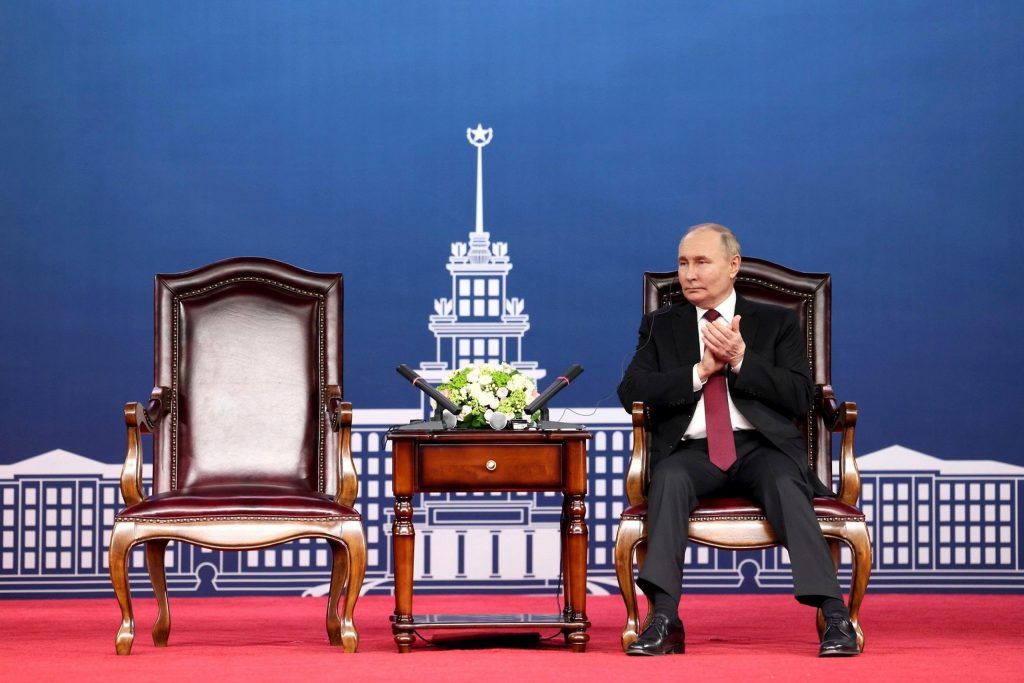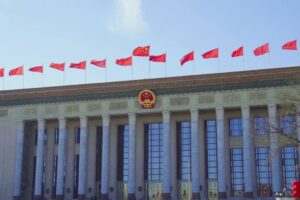
In May, Russian President Vladimir Putin made the first official visit to China of his new term. This was followed by a joint statement announcing a “new era” in Sino-Russian relations and marking the 75th anniversary of diplomatic ties. This document underlined the deepening of the “boundless” partnership between the two nations, announced during Putin’s state visit in February 2022, and cemented by economic interests and mutual distrust of the West, especially following Russia’s invasion of Ukraine.
Conspicuously absent from the joint statement was the green agenda, including clean energy development and other climate action. This omission is striking at a time when China is strategically positioning green issues at the forefront of its diplomacy. The statement’s references to climate change are tepid, with an emphasis on nations’ “common but differentiated responsibilities” toward climate action under the UN climate convention and the Paris Agreement.
The only direct mention of “green transformation” was in the context of the Asia-Pacific region, and it lacked substantive proposals. Moreover, the joint statement contains opposition from both sides to linking climate issues with threats to international peace and security, indicating a lack of seriousness in addressing climate risks. References to renewable energy were few and far between, and were wrapped in vague language about deepening cooperation.
In contrast, President Xi Jinping’s European tour that same month, which included visits to Hungary, Serbia and France, showcased China’s green diplomacy and led to significant developments. China’s leading carmaker BYD opened its first electric vehicle factory in Europe, in Hungary. There was a $2.1 billion investment in Serbia’s renewable energy sector. And green development was one of 18 cooperation agreements signed between China and France.
Engaging in climate action, particularly through initiatives focused on green technology, is increasingly central to China’s global diplomatic charm offensive. But when it comes to Russia, climate action could be the weakest link in a supposedly boundary-less relationship. Why is this happening, and what are the implications?
Hydrocarbon linkage
One compelling interpretation of the scant climate focus in the Sino-Russian joint statement is that environmental issues are subordinated to the strategic imperative of countering American influence. The document emphasizes the “core interests” (根本利益, gēn běn lì yì) of the Chinese and Russian peoples. The alliance is deeply rooted in mutual distrust of American power, shared material interests in the trade of fossil fuels and military technology, and ideals about the merits of authoritarian political regimes pursuing state-led development plans.
One of China and Russia’s “core interests” is based on the hydrocarbon trade of crude oil, coal and natural gas, which brought economic security to Russia and energy security to China. The political fallout from the invasion of Ukraine severely impacted Russia’s traditional energy market in Europe. Pipeline deliveries of gas and oil have declined by more than 80%, while coal exports virtually ceased following an EU ban on purchases of new Russian coal. Gazprom, Russia’s state-owned gas company, saw its natural gas supplies to Europe fall by 55.6% in 2023, leading to a significant financial setback of nearly $7 billion.
Russia turned to other markets to remedy lost revenue. Sino-Russian trade soared to a new record of $240 billion in 2023, driven by China’s increased intake of Russian hydrocarbons. China received a one-third increase in Russian crude oil shipments between 2021 and 2023, while LNG and coal exports nearly doubled over that same period. In 2023, Russia overtook Saudi Arabia to become China’s largest source of oil imports.
There is no hiding the fact that China and Russia engage in substantial fossil fuel trade. One can explain the absence of climate ambition in the May joint statement as part of China’s efforts to increase its energy security by importing cheap Russian fossil fuels.
Uneven climate commitment
The lack of climate considerations also highlights divergent stances and leadership on environmental issues, climate change, and decarbonization goals. As recently as 2019, Putin continued to claim that “no one knows the true cause of climate change” and that determining how it affects human activity is “very difficult, if not impossible.” Worse, in the 2023 update to its 2009 climate doctrine, the Kremlin removed language stating that human activity is “primarily associated” with emissions “from the combustion of fossil fuels.” With fossil fuels central to its energy strategy, Russia’s renewable energy targets and current share fall below 5%. This undermines the Paris Agreement’s more ambitious goal of 1.5°C.
By contrast, China, though the world’s largest emitter of greenhouse gases, has emerged as a leader in green technology. For example, the country is behind more than 80% of the global supply chain for solar equipment. President Xi’s enthusiastic embrace of “green civilization” in 2017 laid the groundwork for China’s “double carbon” goals, which seek to achieve carbon peaking by 2030 and neutrality before 2060. Forecasts suggest China’s CO2 emissions will decline by 2024, driven by substantial growth in low-carbon power installations. For the first time, non-fossil energy sources exceeded 50% of China’s total electricity generation capacity in 2023.
Xi’s motto, “green mountains are mountains of gold and mountains of silver,” exemplifies the dual focus on protecting the environment and promoting economic development. Beijing, unlike Moscow, has managed to make renewable energy a pillar of its economy, establishing a robust low-carbon industrial sector. With clean energy industries contributing to 40% of China’s GDP growth by 2023, they have emerged as the main driver of the country’s economic expansion.
Source: https://reporteasia.com/opinion/2024/07/10/falta-agenda-verde-asociacion-china-rusia/

